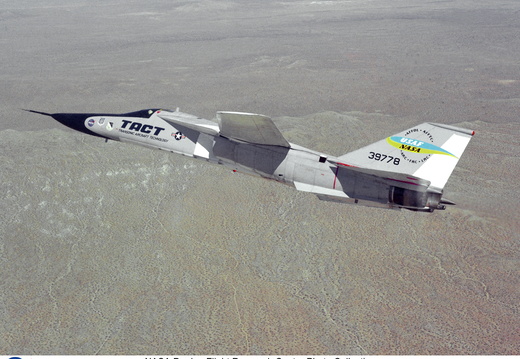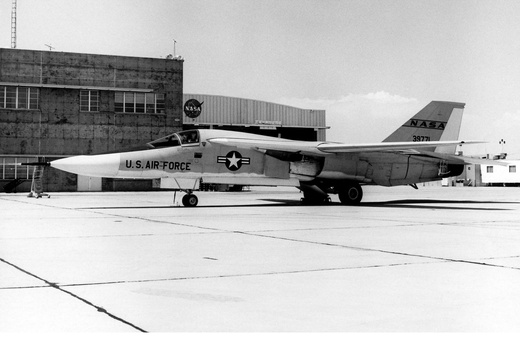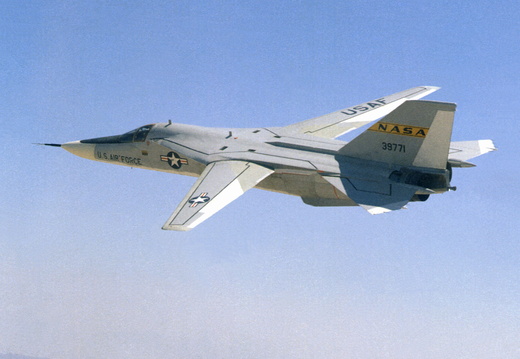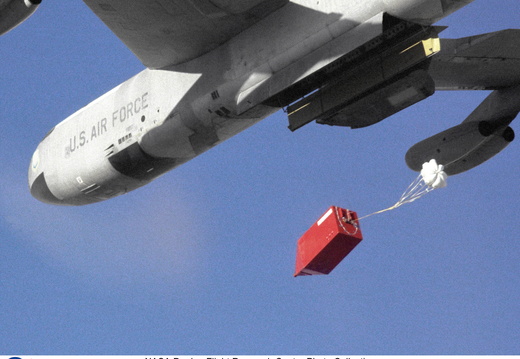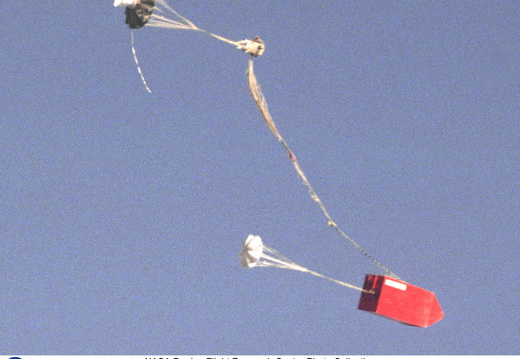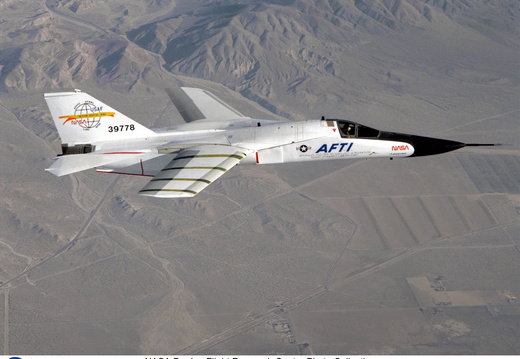
F-111 AFTI
In the early 1980s the supercritical wing on the F-111A aircraft was replaced with a wing built by Boeing Aircraft Company System called a "mission adaptive wing" (MAW). This wing had an internal mechanism to flex the outer wing skin and produce a high camber section for subsonic speeds, a supercritical section for transonic speeds, and symmetrical section for supersonic speeds.
The surface irregularities from leading edge slates was eliminated and trailing edge flap effects reduced. The use of flexible wing skins to produce a smooth upper surface brought this wing a little closer in concept to that of a bird. A digital flight control system provided automatic changes to the wing geometry. The system had four automatic control modes: (1) Maneuver Camber Control - adjusting camber shape for peak aerodynamic efficiency; (2) Cruise Camber Control - for maximum speed at any altitude and power setting; (3) Maneuver Load Control - providing the highest possible aircraft load factor (4) Maneuver Enhancement Alleviation - in part attempting to reduce the effects of gusts on airplane ride.
The AFTI/F-111 MAW system had 59 flights from 1985 through 1988. The flight test data showed a drag reduction of around 7 percent at the wing design cruise point to over 20 percent at an off-design condition. The four automatic modes were tested in flight with satisfactory results.
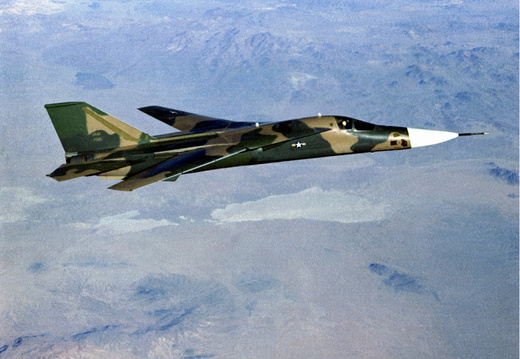
F-111E IPCS
